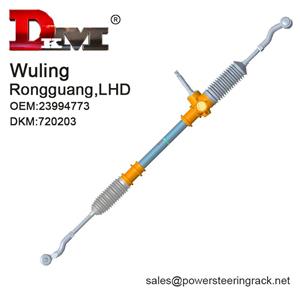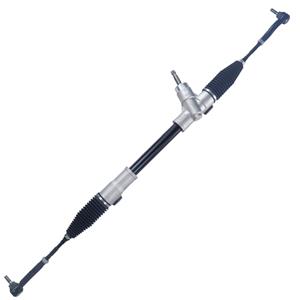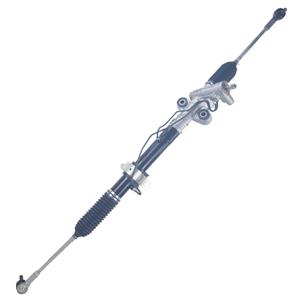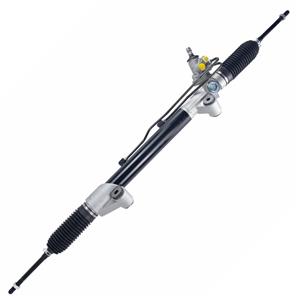Rack and Pinion Steering Vs. Power Steering, Which is Better?
In modern car design, the steering system is an important part of ensuring safe vehicle operation. With the advancement of technology, different types of steering systems have gradually been applied to various models, among which the most common ones include rack-and-pinion steering and power steering. For many car owners and car enthusiasts, a question is often raised: rack-and-pinion steering Vs. power steering, which is better?
This article will explore the advantages and limitations of these two systems by deeply analyzing their working principles, advantages and disadvantages, and applicable scenarios.
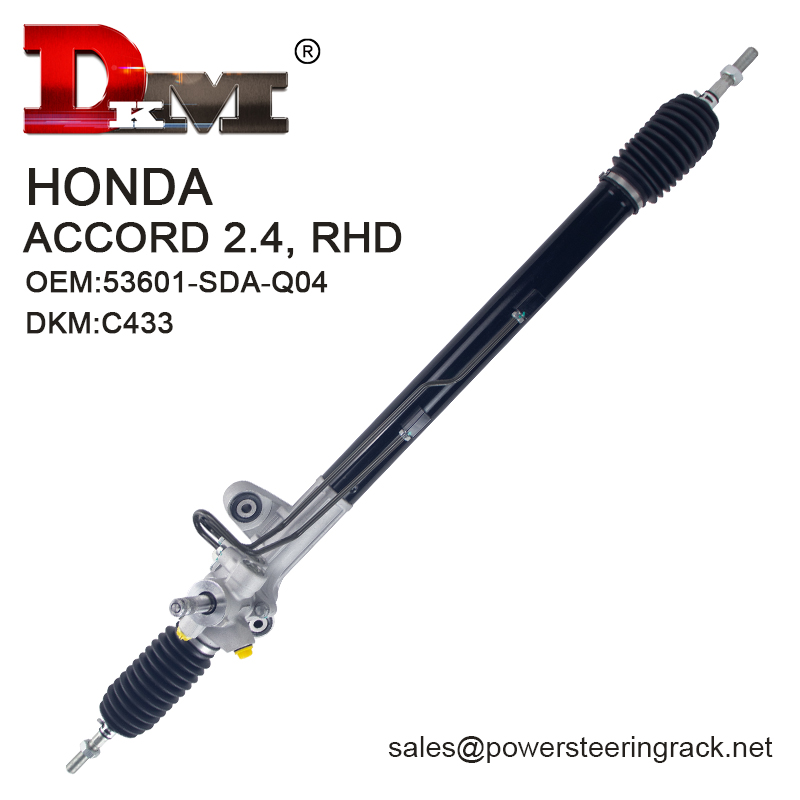
How Does the Rack-and-Pinion Steering System Work?
The rack-and-pinion steering system consists of a steering wheel, a gear, and a rack. The steering wheel is connected to the gear, and the rotation of the gear drives the rack to move linearly, thereby turning the wheel. The key to this system is the interaction between the gear and the rack, which realizes the direct relationship between steering wheel rotation and wheel steering through simple mechanical transmission. When the driver turns the steering wheel, the gear moves along the rack, pushing the rack to move linearly, which in turn drives the wheel to turn. Due to the simple design of the rack and pinion system, there is a direct and linear relationship between the rotation of the steering wheel and the steering angle of the wheel. This design not only makes the steering operation very direct, but also allows the driver to feel the road feedback more clearly.
Rack and pinion steering systems usually have a fixed steering ratio, that is, the proportional relationship between the rotation of the steering wheel and the steering of the wheel is constant. This steering ratio is usually adjusted according to the design requirements of the vehicle, which can ensure both sensitive steering at low speeds and stable handling at high speeds.
How Does the Power Steering System Work?
The power steering system is a system that uses an external power source to assist the driver in steering. It is mainly divided into two types: hydraulic power steering and electric power steering.
1. Hydraulic power steering system - The hydraulic power steering system mainly relies on the pressure of the hydraulic pump and hydraulic oil to provide power assistance. When the driver turns the steering wheel, the hydraulic pump will generate power assistance through the hydraulic oil, reducing the driver's operating burden. The hydraulic power steering system can adjust the power assistance according to the vehicle speed and steering angle, thereby providing a more flexible steering experience.
2. Electric Power Steering - Compared with hydraulic power steering, electric power steering is more simplified and uses electric motors to provide steering assistance. Electric power steering detects the rotation of the steering wheel through sensors and adjusts the power assistance as needed. Since it does not rely on hydraulic oil, electric power steering has certain advantages in energy saving and environmental protection, and also reduces maintenance costs.
A notable feature of power steering is the variability of power assistance. Both hydraulic power steering and electric power steering can adjust the power assistance according to different driving conditions (such as vehicle speed and steering angle). When driving at low speed or parking, the system will provide greater power assistance to make steering easier; while at high speeds, the power assistance will be reduced to enhance the stability and handling of the vehicle.

Rack and Pinion Steering Vs. Power Steering, What are the Pros and Cons?
After understanding the working principles of rack and pinion steering systems and power steering systems, we can further compare their respective advantages and disadvantages.
1. Control Feel and Feedback
Rack and Pinion Steering System allows the driver to directly feel the feedback from the road due to its mechanical connection design. This direct sense of control is pursued by many driving enthusiasts because it can provide a more realistic driving experience. The power steering system, due to the introduction of external power assistance, weakens this sense of feedback to a certain extent. Although the power steering system can make up for this defect by adjusting the power assistance, the rack and pinion steering system is undoubtedly more attractive to car owners who pursue a sense of driving.
2. Steering ease
In terms of the ease of steering operation, the power steering system undoubtedly has an advantage. Especially at low speed or parking operations, the power assistance provided by the power steering system can significantly reduce the burden on the driver, making steering very easy. Relatively speaking, the rack and pinion steering system requires the driver to exert more force to complete the steering operation at low speed due to the lack of power assistance, which may be inconvenient for drivers with weaker physical strength.
3. System complexity and maintenance cost
The rack and pinion steering system has a simple structure and is easy to maintain, which is a major advantage. Since it mainly relies on mechanical transmission, there are almost no complex electronic or hydraulic components in the system, which not only reduces the failure rate, but also makes the maintenance and replacement costs lower. In contrast, power steering systems are more complex. Both hydraulic and electric systems require regular maintenance. For example, hydraulic systems need to check the status of hydraulic oil, while electric systems need to ensure the normal operation of motors and sensors. These additional maintenance requirements may increase the cost of use for car owners.
4. Safety and reliability
Rack and pinion steering systems are generally considered to have high reliability and safety due to their mechanical connection characteristics. Even in the event of a system failure, the mechanical connection ensures that the driver can control the direction of the vehicle. However, power steering systems, especially electric power steering systems that rely on electronic components, may cause the power to disappear when there is an electrical failure or a problem with the hydraulic system, thus affecting driving safety. However, modern power steering systems are usually equipped with redundant designs and fault protection mechanisms to maximize driving safety.
5. Driving needs and applicable scenarios
For car owners with more demanding driving needs, especially those who pursue driving pleasure, the direct control feel and road feedback of rack and pinion steering systems may be more in line with their needs. This system is often used in sports cars and high-performance models to provide a more precise control experience. The power steering system is more suitable for daily city driving and long-distance driving, especially in scenarios where low-speed steering is frequently required. The easy steering experience it provides is undoubtedly more comfortable.
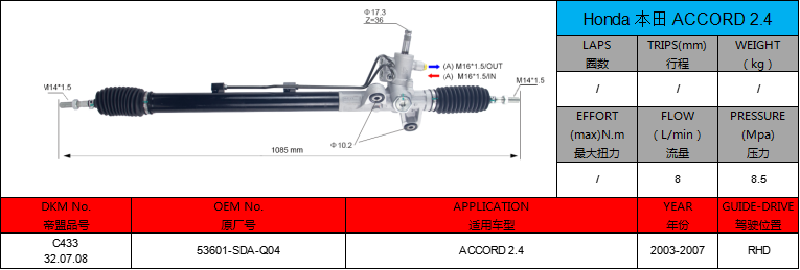
How to Choose Between Rack and Pinion Steering Vs. Power Steering?
When choosing a steering system, car owners should consider the type of vehicle, driving habits and usage scenarios.
1. Vehicle type
For light vehicles and small cars, rack and pinion steering systems usually provide sufficient handling performance and driving comfort. Due to the light weight of such vehicles, drivers can easily complete steering operations even at low speeds. For heavy vehicles or large SUVs, power steering systems are particularly important. The weight and size of heavy vehicles make steering operations more difficult. The power steering function of the power steering system can significantly reduce the burden on the driver and improve controllability.
2. Driving habits
For car owners who are accustomed to precise driving and enjoy driving pleasure, the direct feedback and control feel of the rack and pinion steering system may be more in line with their needs. Such car owners usually pay attention to the interaction with the vehicle during driving and hope to perceive every subtle change in the road through the steering wheel. On the contrary, for car owners who focus on comfort and convenience, the easy steering experience provided by the power steering system is more important, especially in long-term driving and urban traffic, which can effectively reduce fatigue.
3. Usage scenarios
In urban driving environments, the advantages of power steering systems are particularly obvious. Frequent low-speed steering operations and parking requirements make the power steering system's power assist function very practical. On highways or rural roads, rack and pinion steering systems can provide more stable and linear control performance, ensuring that the driver can accurately control the direction of the vehicle.
In summary, rack and pinion steering systems and power steering systems each have their own advantages and disadvantages, and there is no absolute distinction between good and bad. Which steering system to choose should be based on the actual use needs of the vehicle.

